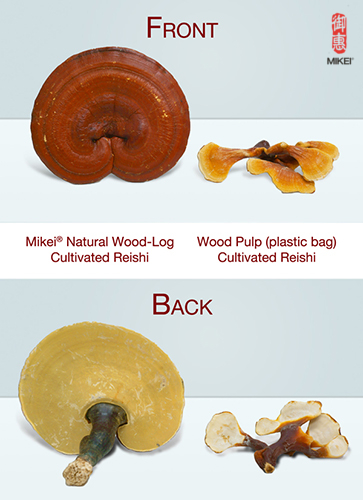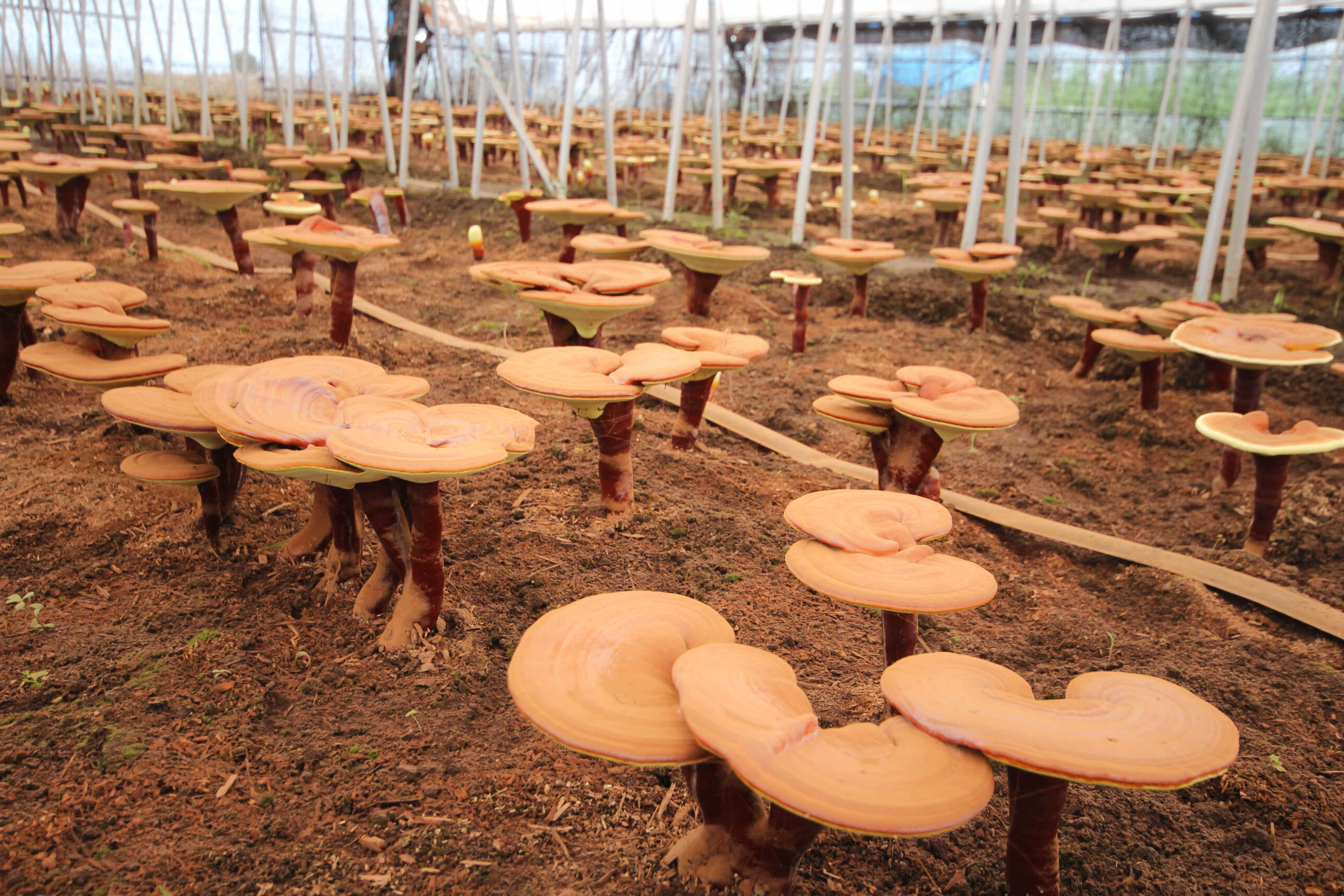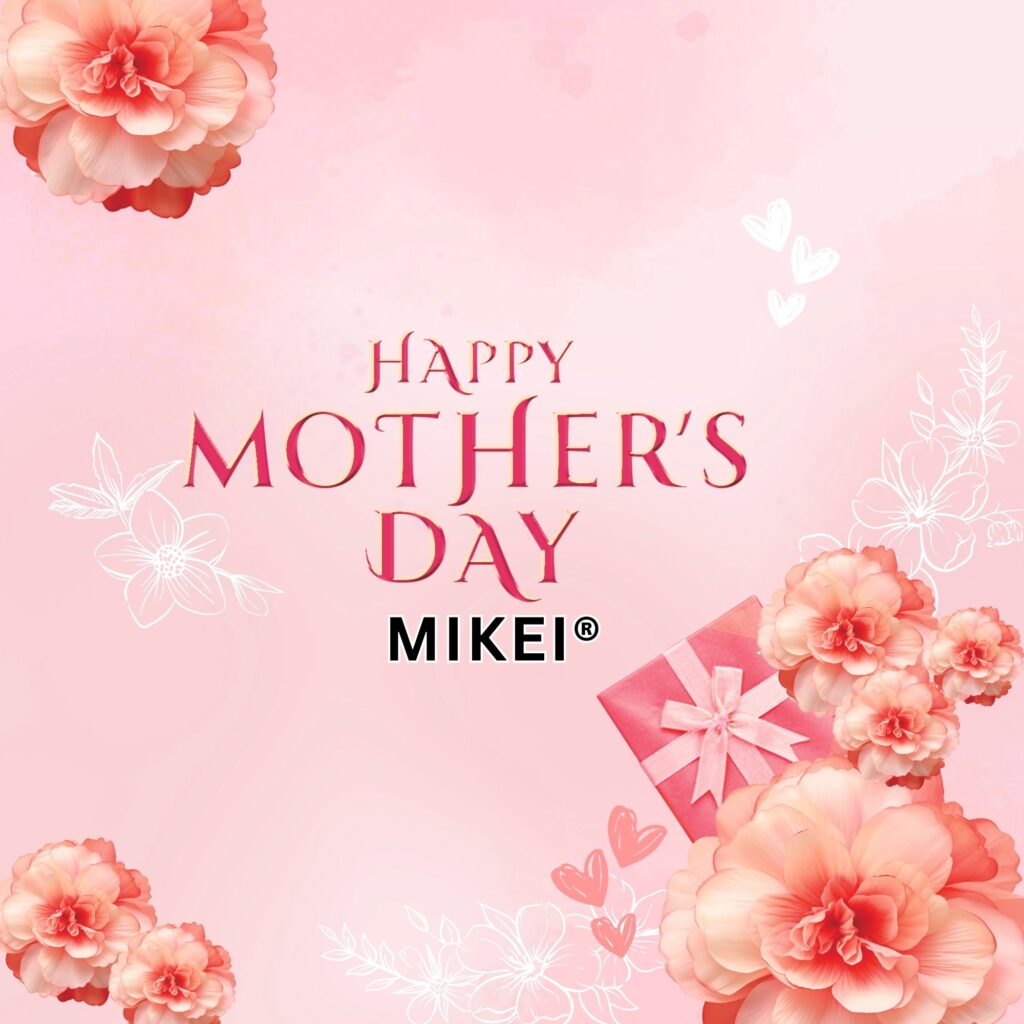Different cultivation methods will yield different quality products with widely varying amounts (or complete lack) of the health beneficial components of the red reishi mushroom. As the natural wood-log cultivation method takes almost a full year and is the most labour and resource intensive, there are now other methods to commercially produce “reishi” products, which are briefly described below.
Inferior Methods of Reishi Cultivation
- Wood Pulp Cultivation
A wood pulp substrate(mushroom growing medium) is placed in a glass bottle or plastic bag in which the reishi fungi are added. The bottles/bags are then stacked on shelves in an enclosed warehouse. After three months, this growing method will usually yield small mushrooms that are thin and frail.
- Wooden Box CultivationThis method is similar to natural wood-log cultivation in which it involves grafting reishi fungi into a wood-log. However the wood-logs are simply placed in a box and not buried in soil. While this is better than wood pulp cultivation, only reishi of medium-size and moderate quality are generally produced since it grows without absorbing the nutrients from soil.

- Lab-grown Reishi (or also known as mycelium/mycelia-based products)
As the red reishi’s preferred growing environment is in the hot and humid climates of Asia, many North American producers use this “indoor” method as a quick, easy, and inexpensive way to mass produce a “reishi” product. Lab-grown products mix mycelium with a substrate such as rice or wheat in an enclosed container and are allowed to grow for a very short period. Unfortunately, the resulting mycelium-based product is different from a properly grown reishi mushroom fruiting body in terms of its composition and appearance. In addition, these products may lack of bioavailability (Upton 2006). Mycelium-based products also do not contain ganoderic acid A, an intensively studied and important health beneficial active component of reishi, which gives red reishi its unique bitter taste. For more information, read Mushroom Dynamics.
Mayuzumi’s natural wood-log cultivation method is the only reishi cultivation technique that can naturally produce high quality red reishi that can attest to all of the health benefits of which this miraculous mushroom has been used for thousands of years.
The Mikei Difference
Mikei uses only high quality, natural wood-log cultivated red reishi fruiting bodies grown to full maturity and rich in all of the active components of which make the revered mushroom effective as a health food supplement.





